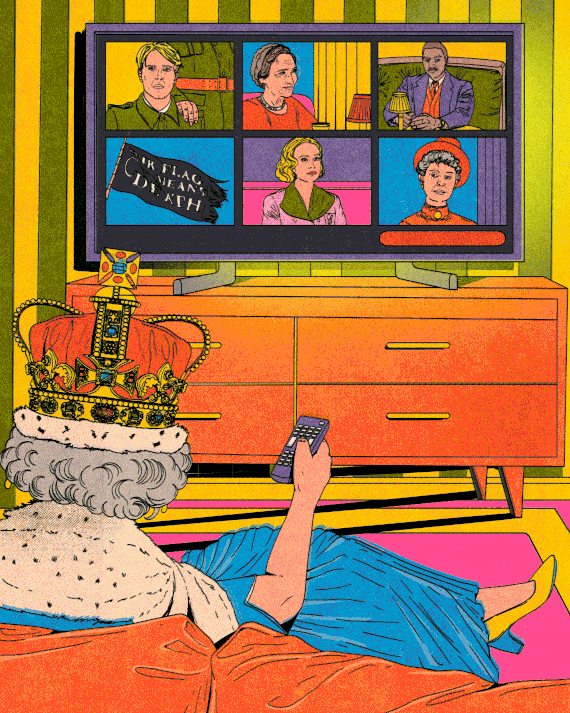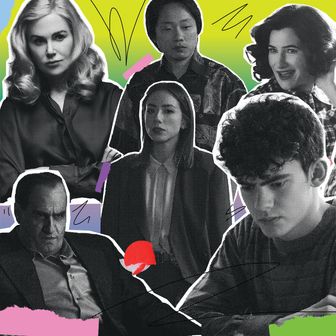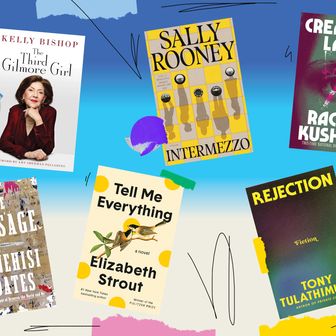
The fall TV of 2023 has an allergy to modern life. There’s the last season of Netflix’s The Crown, which will pick up in the ’90s. Season two of Julia (Max’s Julia Child show) takes place in the ’60s and ’70s. Lessons in Chemistry (Apple TV+) and Fellow Travelers (Showtime) start in the ’50s. Faraway Downs (Hulu) and All the Light We Cannot See (Netflix) are both set in the ’30s and ’40s, and Our Flag Means Death (Max) is in the early 1700s. Then there are The Buccaneers (Apple TV+), an Edith Wharton adaptation; a miniseries called The Gold about an ’80s heist (Paramount+); and season two of The Gilded Age (HBO). Even Krapopolis (Fox), a new animated show from Dan Harmon, is set in a mythical ancient Greece.
The trend would be less obvious if the network-TV slate hadn’t been hollowed out by this summer’s strikes. (Most TV this fall comes from a backlog of releases for streaming and premium-cable channels.) Network television is more immediate — an episode written in February could be out by March — and it has always been full of contemporary series: police procedurals, soapy dramas, and sitcoms that take place in an eternal now. (Somehow, one of the few network shows that banked episodes for a fall premiere is the reboot of Quantum Leap, which is about a guy who gets transported into the bodies of people in the past.) There will be no new episodes of Abbott Elementary or Grey’s Anatomy or, so help us, Law & Order: SVU.
As TV has drifted further from quick-turnaround release schedules, the task of writing material that speaks to the current moment has gotten trickier. It’s difficult to deal with the exact details of the present when shows that are green-lit don’t premiere until years later. “Now” becomes some point in the near future. For decades, this was an advantage TV had over film. Television nestled more closely into the rhythms of the cultural conversation. In 1992, Murphy Brown could have a baby in May, become a real-life national news story about single parents over the summer, then deliver a monologue aimed at the vice-president of the U.S. in time for the September premiere, long before the November election.
It’s not that TV about contemporary life can’t generate interest. In the past year alone, shows like The Bear and Beef became big, acclaimed hits. The last season of Succession ate up nearly all the TV conversation this spring. But TV has been gravitating toward the past for a while, a long tail of the Mad Men effect. Few series have replicated that show’s exquisite meditative plotting, its particular blend of ennui and dry humor. Dozens, though, have picked up its visual approach: Costumes and settings have become aesthetic markers, making it clear that a series has a distinctive look and feel (a by-product, too, of the still-reverberating influence of The Crown and Bridgerton). Period shows are not the only version of this — video-game adaptations like Twisted Metal or The Witcher are as much about capturing a tone or a style as they are about the narrative. It’s hard not to look at a series like The Gilded Age and see it as primarily interested in presenting a mood through a painstaking investment in gleaming archival veneers. If she wears the correct cut of dress and rails against the accurately represented social restrictions of her day, who she really is doesn’t matter all that much. In the battle for screen space, TV about another era can at least provide a fast-glance visual differentiator from everything else to be found scrolling on your phone.
Cable and streaming shows set in the past do still aim to say something about the present, and the result is often a hard hit on a soft target. Julia is a meditation on modern marriage and mass media. The Crown persistently attacks ideas about contemporary celebrity through the back door of past tabloid actions. Our Flag Means Death is a loving exploration of found families and queer identities, swaddled in the warm mise-en-scène of 18th-century piracy. Past periods of humanity can feel strikingly evocative of our own, and they can be illuminating stories to tell. But none of them has to show the messy intricacies of what today is actually like. When scripted TV leaves behind depictions of our current world, it starts to feel insular and disconnected. No wonder reality TV has surged. It’s faster and cheaper to make, and it focuses on what the world is like right now. Even while it foregrounds interpersonal drama, it’s always chewing through arguments about 2023’s ideas on class, racism, sexual assault, social media, and shared political values. It’s filling a space that so much scripted TV has ceded.
A handful of original series over the next few months dare to be about life right now, including FX’s A Murder at the End of the World, a show about a crime at a reclusive billionaire’s retreat; the second season of Rap Sh!t, the Max comedy about two up-and-coming rappers; and Hulu’s semi-autobiographical Amy Schumer comedy series, Life & Beth. Some of them promise to provide what contemporary fiction can do so well: bracing, arresting stories that distill something previously unseen or unarticulated about modern culture. Most notable, Showtime’s The Curse, the new series from Nathan Fielder and Benny Safdie, is about the ethics and logistics of reality-show image-making, touching on the politics of gentrification and the slippage between how we shape ourselves and how others- see us. There are also examples of precisely how challenging the present can be. Apple’s The Morning Show returns for its third season this fall and continues to wrestle with current news culture, at times mining rich territory in its depiction of legacy-media companies that desperately hope streaming will save them. As in its first two seasons, though, it can’t help circling and reemphasizing preprocessed narratives from the recent past: Me Too, COVID, the version of the climate crisis that felt most urgent three crises ago. It’s hard to think much more beyond, Ah, right. I remember this.









